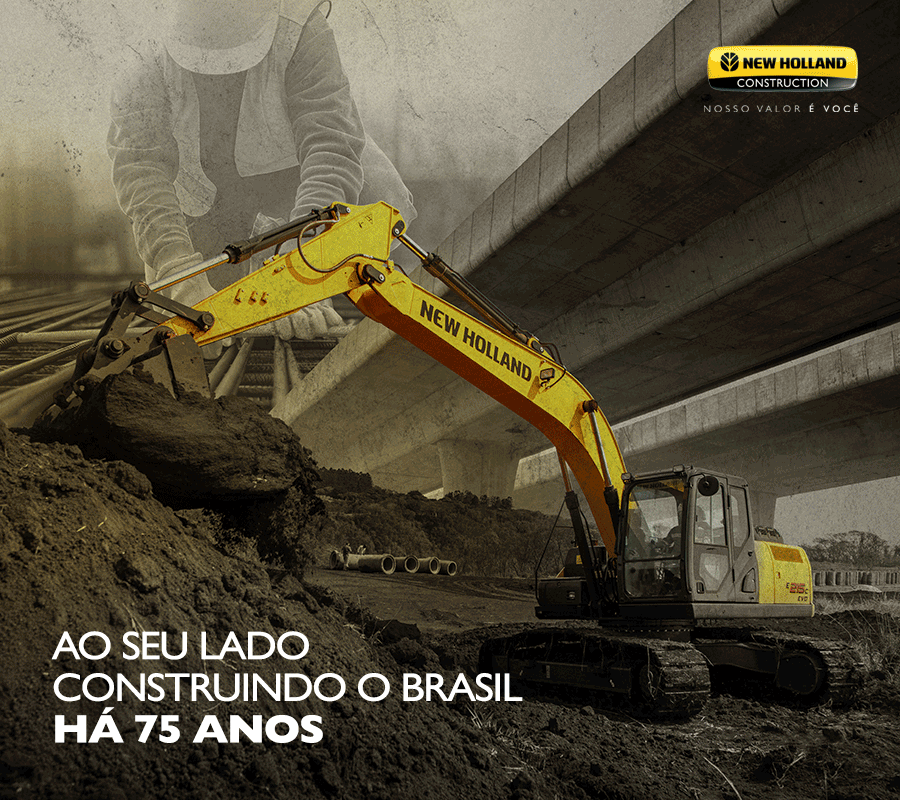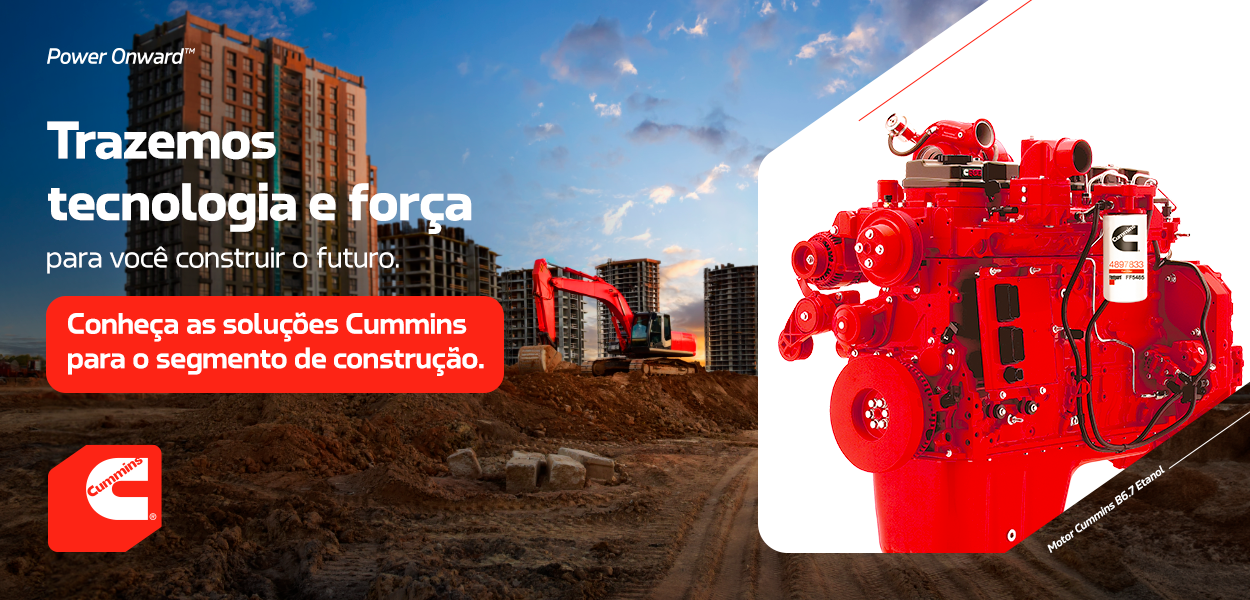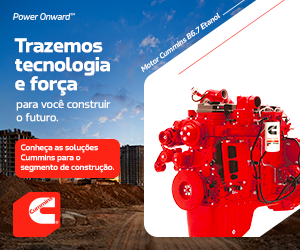Solutions extend durability of Off-the-Road tires
Distinctively different models of off-the-road tires are introduced worldwide to enable greater productivity of construction and mining equipment

OTR (off the road) tires can represent one of the highest costs in components for various types of construction and mining equipment, such as wheel loaders, motors graders and trucks. Therefore, choosing the most appropriate model for the work that the machine will perform in the future is an indispensable prerequisite to ensure high productivity and lower maintenance costs. It is precisely with this objective in mind that tire manufacturers are continually launching new products for the sector.
Take Michelin for example. In 2005, the French manufacturer successfully launched a new concept in OTR tires "that don’t go flat", and now it is making that concept available for compact equipment such as skid-steer loaders, too. Officially launched in October 2012, the X-Tweel SSL non-pneumatic assembly eliminates the inner tube and works as a single unit which includes the tire, wheel and valve assembly. The innovative solution, which replaces the 23 components of a typical radial tire, is comprised of a rigid hub, connected to a tread band by means of flexible, deformable polyurethane spokes that absorb shocks and quickly return to their original shape. In short, it is a tire that does not puncture and does not require maintenance.
Innovation
According to Tim Fulton, director of Michelin Tweel Technologies, in a release to the international press, traditional pneumatic tires used for skid steers are affected more often than we’d like by punctures and leaks, which causes unnecessary costs with machine downtime.
On account of that, many users wind up filling their pneumatic tires with foam or replacing them with solid tires resulting in a number of other problems, such as machines with inadequate traction, poor handling and loss of ride comfort for the operator.
Because of these limitations and foreseeing the applicability of the technology for rugged terrain, Michelin believes the X-Tweel will be accepted enthusiastically by the off-road sector. According to the executive, the novelty also offers the advantages of no air pressure to maintain and ease of assembly.
Besides their application in construction and recycling, the use of these tires in mini loaders is indicated for the agricultural industry, which further enlarges the range of opportunities for their insertion in the market. Although it would also be interesting for the Brazilian market, the X-Tweel is only available in the USA and Canada, for the time being.
Durability
Bridgestone is another active player in the segment of off-road tires that focuses on technological innovation and the use of distinctive, specialty tires as a way to achieve better equipment performance. The company - which offers models for wheel loaders, motor graders and off-road trucks - estimates growth between 5% and 7% in the domestic market for OTR tires in 2013. “This includes radial and bias (cross-ply) tires,” adds Marcos Aoki, general manager of sales and marketing for Bridgestone Bandag. “Like other companies, we believe in such growth because of the large infrastructure projects that are planned in the Brazil from now through 2016.”
Among the main products offered by the U.S. manufacturer is the L317 tire, which - according to the company - provides better traction in the operation of off-road trucks, resulting in superior durability of the tire and greater resistance to cuts and wear. Another model, the VHS - which is used in cranes - provides good performance for services requiring high travel speed on asphalt. According to Bridgestone, the model also provides superior durability and heat resistance, providing slow and regular wear and a low level of noise.
The ‘V-Steel’ is also among the manufacturer’s latest models. With tougher side walls, the model offers greater stability during operation and better distribution of the tread area in contact with the ground, minimizing wear. The tire also has reinforcement in the region of the shoulders, reducing the movement of tire ‘bars’ and irregular ‘saw-tooth’ pattern wear.
Growth
Based on the positive results achieved in 2012, Michelin also believes in growth of the market for OTR tires in Brazil. According to Adriana Shoshan, marketing director for mining and earthmoving/grading tires in South America, the company’s sales of off-road tires increased 17% last year, compared to 2011. With that performance, she says, the company took the lead in the segment of original equipment manufacturer (OEM) products, where the company estimates that it already holds a 30% share of the market. “This also demonstrates the advancement of ‘radialization’ (i.e. opting for radial tires) in the Brazilian market,” says Shoshan, adding that presently only 40% of construction and infrastructure machines come from equipment manufacturers equipped with radial tires, while in mining radialization has already reached 98% of machines.
Following the trend, the manufacturer also introduced its XZM radial tire, consisting of a steel casing and deep tread with highly-compressed rubber. “This model offers the vertical flexibility required for heavy work, ensuring the preservation of mechanical parts without affecting productivity,” says Shoshan. This new product, as the company’s executive warrants, further reduces the lower hourly cost of operation and saves fuel when compared to other models available on the market.
Another of Michelin’s recent launches for the off-road segment is the XDR2 which is focused on mining. According to the executive, the product is equipped with steel protective plies which make it up to 60% stronger and more resistant to corrosion compared to other types of tires available for the segment. “With this, the potential for tire life is up to 20% higher,” Shoshan calculates.
Maintenance
As we see, the news in OTR tires presented by manufacturers can lead to better cost-benefit ratios, but this will only occur if the tire actually operates under the proper conditions. At the top of the list of parameters that most affect the life and productivity of tires is the relation between demand pressure and tire pressure.
According to the specialists that we interviewed, low tire inflation pressure can lead to a reduction in the km/h yield of the tire, fatigue and to overheating of the tire casing, with the risk of cuts to sidewalls, increased fuel consumption and lower equipment stability. According to a study conducted by Michelin, the metrics indicate that when pressure is 20% lower than required it causes a loss of 25% the tire’s yield. This shows that, in practice, the greatest problem for any fleet of equipment regarding tires is the lack of frequent maintenance of tire pressure.
Like low pressure, high pressure also reduces the tire’s performance and yield, but the consequences don’t end there. Equally detrimental, the effects caused by excess pressure can, for example, result in reduced adherence to surfaces and increased slipping, cuts in the tread, tread-belt separation from ‘pounding’, and even discomfort to the vehicle operator.
A 20% higher than required pressure causes a loss of 15% in the life of a tire, repeating, on a smaller scale, the same effects of caused by low pressure. “If, besides the wrong pressure, the vehicle is traveling at a speed greater than the tire was designed for by the manufacturer, its service life will be even further impaired, to the point of being halved, since it will cause overheating of the tire’s stabilizing belts,” explains Norwil Veloso, consultant to Sobratema.
Thus, both “over-inflation” as well as “under-inflation” can cause trouble, and the recommendation of specialists is clear: check tire pressure periodically and often. Michelin, for example, advises daily verification of tire pressure in large mines and every three days in mid-sized mines and cement and construction companies. The rule applies to both off-road trucks and mobile equipment, such as loaders and motor graders. According to the company, the ‘inflate-to’ values vary depending on the equipment and the manufacturer, but they usually range between 90 and 110 psi (pounds per square inch) with cold tires for off-road trucks, and from 40 to 60 psi, cold, for loaders and graders under normal working conditions.
Hoff invests in retreading
To improve service to the off-road segment, Hoff - a company established in Brazil’s Rio Grande do Sul state - has invested in establishing its own laboratory for analysis, mixture of compounds and application. According to Hoff’s commercial director, Loivo Hoff, compounds resulting from these analyses provide superior performance for equipment at work out in the field since, with laboratory support, you can achieve better adaptation of the tire to the operation. Regarding retreads, the director assesses that radial tires enable repairs of major damage, but are more susceptible to corrosion of the steel cords in the tire casing. “When it comes to major repairs, ‘bias’ or ‘cross-ply’ tires are compatible with the use of inner tubes, so the difficulty that remains is the excess of repairs which causes displacement of the casing,” concludes the executive.

Av. Francisco Matarazzo, 404 Cj. 701/703 Água Branca - CEP 05001-000 São Paulo/SP
Telefone (11) 3662-4159
© Sobratema. A reprodução do conteúdo total ou parcial é autorizada, desde que citada a fonte. Política de privacidade














